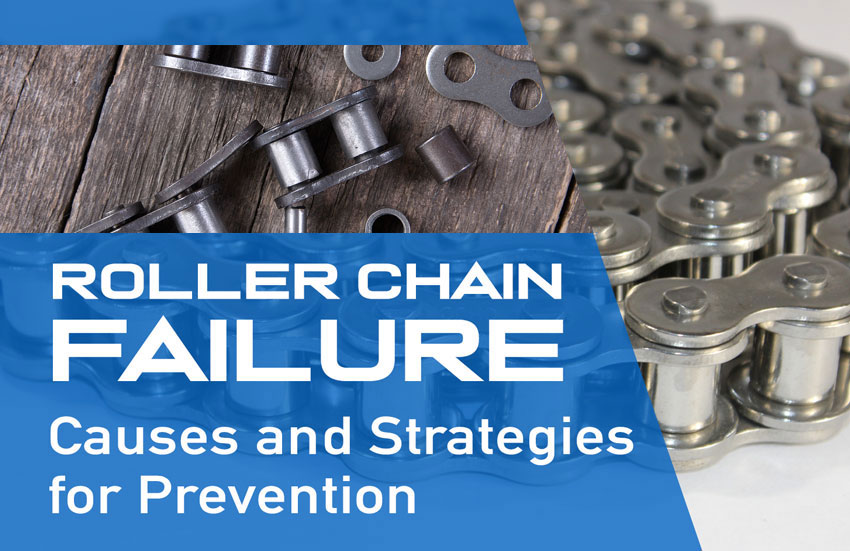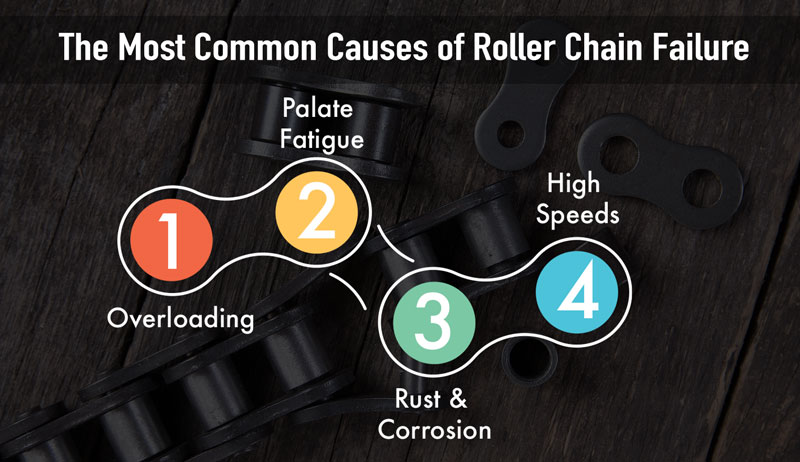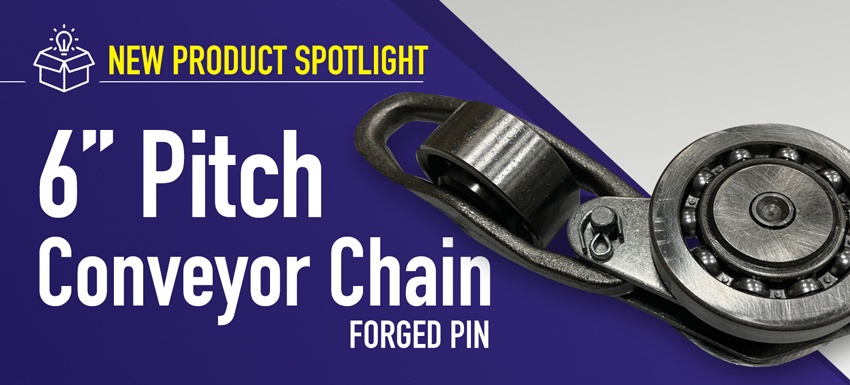The roller is a key part of the production process in any industry, and it allows raw materials and other items to move between different stages of production. Therefore, it can be very distressing to encounter a roller chain failure during manufacturing suddenly. It disrupts your entire supply chain and causes you a financial burden regarding repair and maintenance costs. However, all businesses should be prepared for roller chain failure because it can happen anytime.
The best way to be prepared for roller chain failure is to know what causes it and the best strategies to prevent and fix it proactively. This way, you would never see your production process halted as your technicians desperately trying to fix things. This article focuses on the causes and methods for preventing roller chain failure.
Common Causes of Roller Chain Failure
Before we discuss anything else, it is important to identify and understand why the roller chain fails so that you can be quick to prevent it. Let’s look at some of the main causes and reasons why this happens.
1 Roller Chain Overloading
One of the principal causes of roller chain failure is bearing consistently high loads. The roller chain is built to sustain a certain amount of weight only. However, most factories and businesses try to overload their roller chain to increase their throughput or maximize their efficiency. Due to the excessive load put on the chain, the pinholes start to enlarge, eventually causing the links to tear away and break.
Most of the time, you can also see the pins breaking under the weight due to the load and a problem called galling. Galling occurs when two parts grind against each other due to a lack of friction and eventually break away.
If you experience roller chain failure consistently, look for the load being put on the plates. Sometimes, you might find that only one side of the plates is worn out, which means misalignment. To fix this, you might have to perform new calculations and make some design changes or reduce the overall load put on the roller chain.
Otherwise, you can replace the chain with a more durable one, particularly one that can withstand the load you require. Moreover, you can ensure smooth torque transmission between two shafts by using larger sprockets in the roller chain or getting a larger chain altogether. You can also use a leveling device to check for misalignment. Once you have fixed it, you can tighten the bearing and sprocket so that this doesn’t happen again.
2 Roller Chain Palate Fatigue
Another common cause of roller chain failure is something known as plate fatigue. The plates have a certain fatigue load that they can withstand. Still, when they are overloaded, the fatigue loads start developing cracks perpendicular to the roller chain axis. This usually happens when the heaviest load is pressing down on the junction perpendicular to the axis of motion. Therefore, the stress starts building around the pinholes in a vertical direction. It is only a matter of time before the cracks widen and cause the entire link to break away completely.
To prevent this, you will need to identify where the highest amount of load is being applied. For instance, if you have a hydraulic motor, the roller chain fatigue might be caused by the stopping function. In this case, you will have to look for cross port reliefs to relieve the pressure. Alternatively, if the problem occurs during startup, you can install a proportional valve that accelerates the machine to full speed instantly.
However, electric motors might not give you that much chance to fix plate fatigue. Therefore, you can resort to increasing the size of the chain, getting larger sprockets, or adding a flywheel to the mechanism. Whichever method you follow, you will have to replace the chain while doing it since it has already developed cracks.
3 Roller Chain Rust and Corrosion
Rust and corrosion are the biggest enemies for any machine that contains roller chains, and they are also highly common. You might find that a perfectly functioning and smooth roller chain might suddenly crack at the links, thus disrupting your operations. Upon closer inspection, you might find that the arcs of the link plates have come in contact with a corrosive substance, such as an acid or other caustic chemicals.
Another way to identify rust on your roller chain is by noticing surface pitting, which forms rust on a metal surface. You can observe this on the sides of the links and the plates. At first, you might notice a reddish tinge, which causes kinks on the chain. The rust starts to spread to the links, pin, and sleeve. By the time you see it, it might have also enveloped the exterior of the sprocket, at which point most of the damage is already done.
To fix this problem, you will need to remove the entire roller chain and inspect the entire mechanism for the substance or chemical causing corrosion. It can be your lubricant, especially if it contains water or acids. You might have to change the lubricant or switch to a V-belt or serpentine mechanism.
4 Machines Running at High Speeds
Another highly common cause of roller chain failure is high speeds. In this regard, the critical speed of the machine is integral because it causes the start of vibrations in the machine. Vibrations are never good for your roller chain mechanism. The amount of vibration and wear the chain can withstand depends on the length of the chain and its tension levels.
The best way to mitigate this issue is to add support to the chain so that it doesn’t move. The supports would minimize the vibrations of the roller chain, and a tensioner can also achieve this.
These are some of the most prevalent reasons for roller chain failure, and the best way to avoid them is to do routine and periodic inspections, as well as preventative maintenance. There is a lesser likelihood of failure if you stick to the roller chain’s suggested inspection schedule. Unfortunately, roller chains will need to be changed from time to time.
Whether you’re searching for a new roller chain or a whole supply of Roller Chain, Sprocket, and Gear, we’ve got you covered.
MPI has a typical box length of 10 feet and can custom cut roller chain to any size. Roller chain is used in a wide range of mining, food and beverage, trenching, and industrial applications.
We supply our clients domestically and internationally on a regular basis and can arrange shipments to your specifications thanks to our global sourcing approach.
Maximize the efficiency of your equipment.
Learn more about roller chain issues and prevention from our Roller Chain Failure Investigation Case Study.
Daniel Szwed - Marketing Manager

Resourceful and innovative Marketing Pro, with 20+ years of progressive experience in the marketing and creative technology industry. Responsible for digital and traditional marketing efforts that promotes brand awareness, increases engagement, and drives revenue.



















